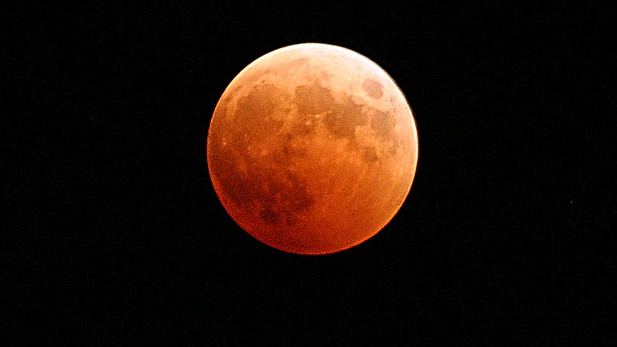
Listen:
By Julianne Stanford, For AZPM
Stargazers will witness a "blood moon," a rare full lunar eclipse Sunday night.
The phenomenon gets its name from moon’s large appearance in the sky and rusty-red color it will get as it passes through the Earth’s shadow.
This eclipse will be a rarity for a variety of factors.
The red color is caused by dust trapped in the Earth’s atmosphere, University of Arizona’s Flandrau Planetarium Director Michael Magee.
“It will cause the red portions, the red colors of sunlight to bend around the atmosphere of the Earth, and that’s the light that lights up the moon during the eclipse,” Magee said.
A super moon occurs when the moon is at its closest point to the Earth in its orbital rotation, leading it to appear magnified.
The last time a super moon coincided with a lunar eclipse was in 1982, and the next time it is predicted to happen will be 2033.
“Another interesting factor is that this is the fourth total lunar eclipse in something called a tetrad of eclipses," Magee said. "There were two back in 2014, one in April of this year - that’s three - and Sept. 27 is the last of the four. This is rare.”
Additionally, the eclipse is projected to peak early in the evening around 7:45 p.m., so it will be easily visible for most Tucsonans.
The origin of the blood moon nickname is not quite what people might think it is.
“A lot of people assume that that may be a historical thing that goes way back hundred of years if not thousands of years. Well, that’s not the case.” Magee said.
The origin of the nickname is actually part of one pastor’s prophecy that predicts the end of the world will be indicated by the tetrad of eclipses and the red moon.
“And the Bible says you’ll know that’s happening because the sun will be made dark to turn black and the moon will be made to bleed in the sky,” Magee said.
However, Magee said not to worry about the doomsday scenario.
“He predicted the end of the world, and well, we’re still here ... and obviously it didn’t happen,” he said.
You can learn more about eclipses and the moon at the planetarium’s Lunar Eclipse Lunacy Night. The event will be held on campus beginning at 5 p.m. with $5 admission fee.
It will be one of the best places in Tucson to see the eclipse, Magee said.
“We’ve got a clear view of the eastern sky, which will be just right because the moon will be rising in the east,” Magee said. “We’ve got the big mall area out front of Flandrau where we can set up telescopes and invite people to look through the telescopes at the moon.”
Tucsonans can expect to see a spectacular lunar display, if weather conditions permit.
Julianne Stanford is an AZPM intern and a student at the University of Arizona School of Journalism.

By submitting your comments, you hereby give AZPM the right to post your comments and potentially use them in any other form of media operated by this institution.